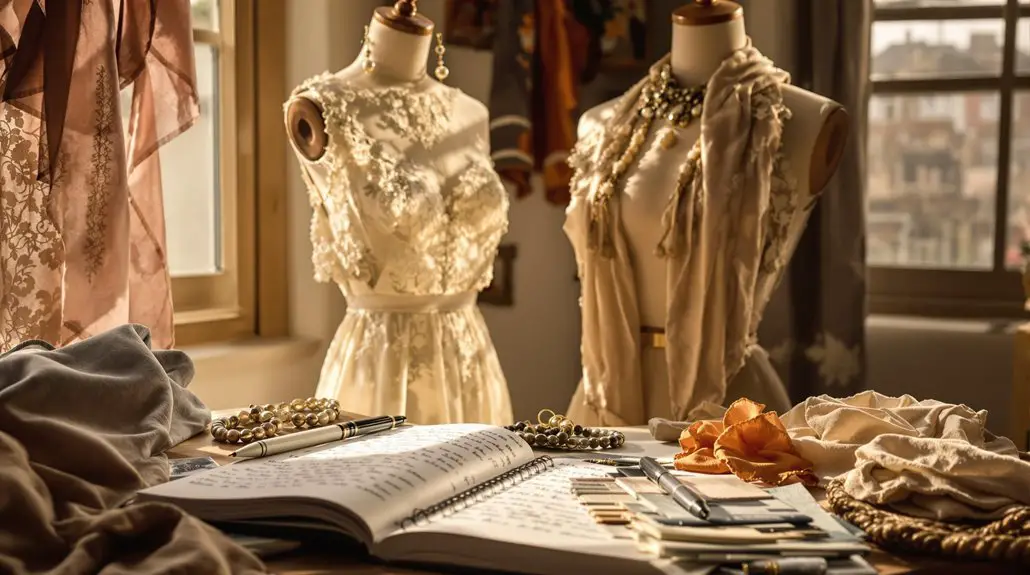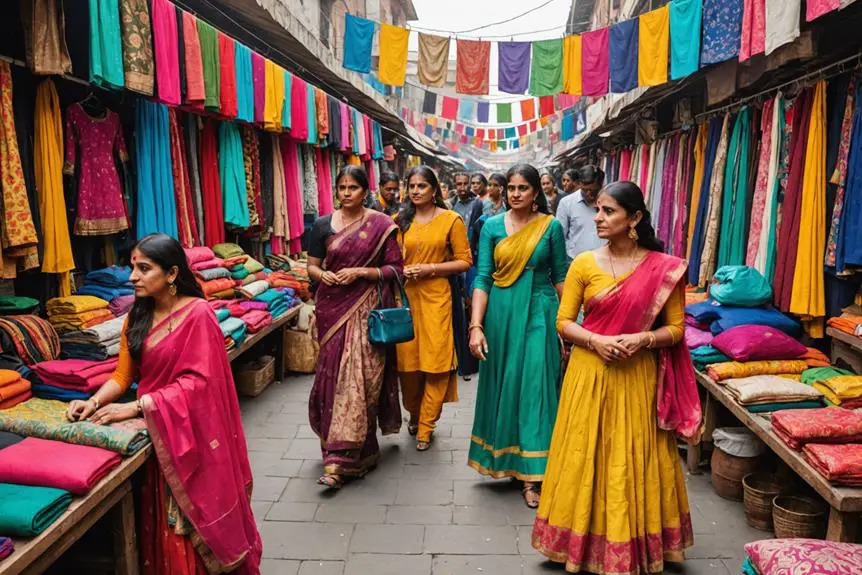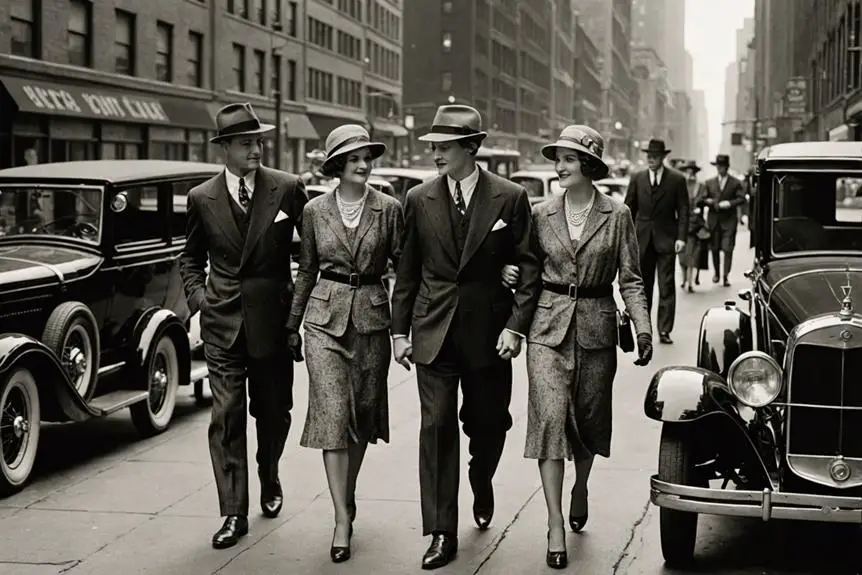To really sell vintage clothes, you've got to tell a story with each piece, making it leap off the page. Emphasize the luxurious fabrics, like that silky dress your grandma wore dancing in the 70s, or mention that charming patina that shows how it's lived a beautiful life—every scuff a whisper of adventures past. Give clear, honest descriptions, complete with measurements to avoid sizing surprises. And don't forget to share why it's special—like its unique history or rare design. By weaving these elements together, you'll capture hearts and wallets alike, ensuring your treasures find a new home. More awaits!
Understanding Unique Qualities
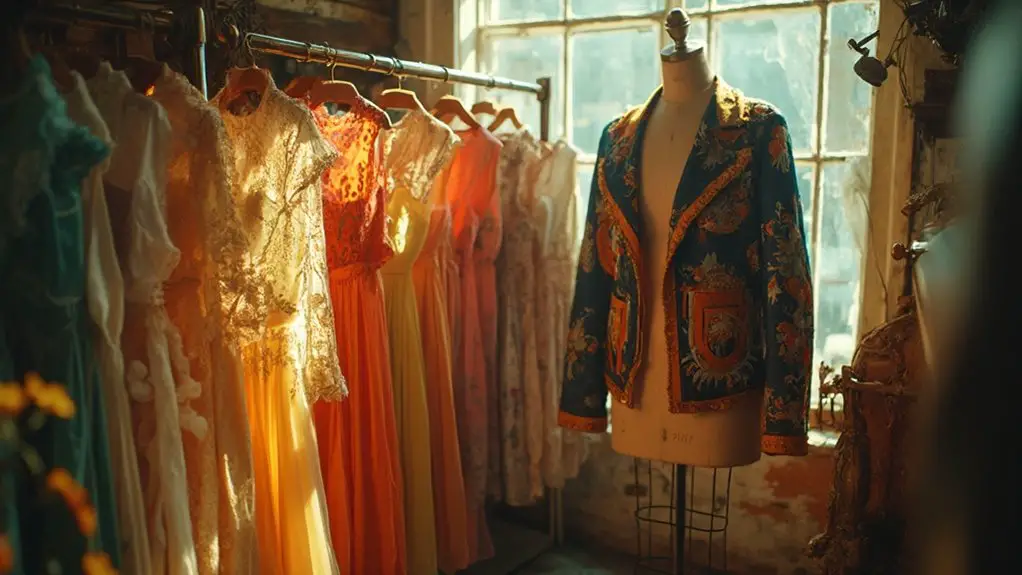
When diving into the world of vintage clothing, you're met with unique qualities that set these pieces apart from modern wear. Picture luxurious fabrics like vintage silk draping softly over your skin, crafted with a finesse that seems to whisper stories of the past.
These clothing items often feature hand-stitching and intricate details, reflecting a time when craftsmanship mattered as much as style. You might come across beautifully tailored high-waisted skirts or fitted jackets that hug your form in a way current trends just can't match.
The quirks don't stop there; think about those detachable fur collars or pockets that weren't just for show. They seamlessly blend function with fashion, giving a nod to practicality in a world that often forgets it. Vintage clothing often promotes sustainable fashion by reusing materials, which further enhances its appeal.
And let's not forget the era-specific designs—whether you rock a 1920s flapper dress or a 1950s swing dress, you embody a slice of history. Vintage clothing tells tales of cultural moments, making each piece more than just fabric; it's a wearable connection to a bygone era, woven with memories and dreams.
Embrace these qualities, and you'll feel the vibrant pulse of those who wore them before you.
Crafting Detailed Descriptions
When you're writing descriptions for vintage clothes, think about how the fabric feels against the skin or the way a certain cut accentuates curves—using sensory language like that can really draw buyers in. Additionally, you should highlight the unique craftsmanship that often characterizes vintage pieces, as this can further intrigue potential buyers and showcase the value of your items. You'll want to provide exact measurements too, because nobody enjoys the surprise of a dress that's six inches too small or pants that feel more like a straight jacket than stylish wear. Adding details about the vintage labels can also help potential buyers appreciate the authenticity and history of the item.
Sensory Language Usage
Using sensory language transforms your vintage clothing listings from mere descriptions into vivid experiences that captivate potential buyers. When you paint a picture with your words, you invite shoppers to feel and imagine the item's unique qualities.
Picture them slipping into a lovely 1950s dress that whispers elegance with every twirl. Here's how to evoke those sensory details:
- Textures: Describe the fabric's feel—maybe it's like soft cotton that caresses the skin or luxurious silk that glides effortlessly. Developing an eye for quality vintage items is essential to highlight the uniqueness of the fabric in your descriptions.
- Colors: Use vibrant adjectives to bring colors to life—perhaps it's a radiant teal that reflects the hues of a seaside sunset.
- Sounds: Capture the gentle rustle of fabric as the wearer moves, a subtle melody that adds grace to their steps.
- Scents: Allow nostalgia to waft through the listing by mentioning the scent of a bygone era—think chic florals or musky warmth.
Exact Measurements Importance
Sensory details can entice buyers, but without exact measurements, even the most beautifully described vintage piece might fall flat. You know how it feels to find that perfect dress, only to realize it doesn't fit quite right? That's the heartbreak we want to avoid.
Accurate measurements are essential in the world of vintage and secondhand apparel; after all, trying items on isn't always an option. Imagine this: a potential buyer spots your gorgeous 1960s blouse but hesitates, skipping your listing because they can't determine if it'll fit. When you provide bust, waist, and hip measurements, as well as key details like sleeve length or shoulder to waist, you're not just selling clothing—you're building trust. Accurate measurements improve customer satisfaction and lessen the chance of returns and disappointed customers, ensuring they feel confident in what they're buying.
Oh, and let's ignore those pesky size labels; vintage sizing can be a whole different ballgame. So, make sure your measurements are clear—whether flat or doubled—giving buyers the confidence to envision themselves in your unique piece.
Storytelling Techniques
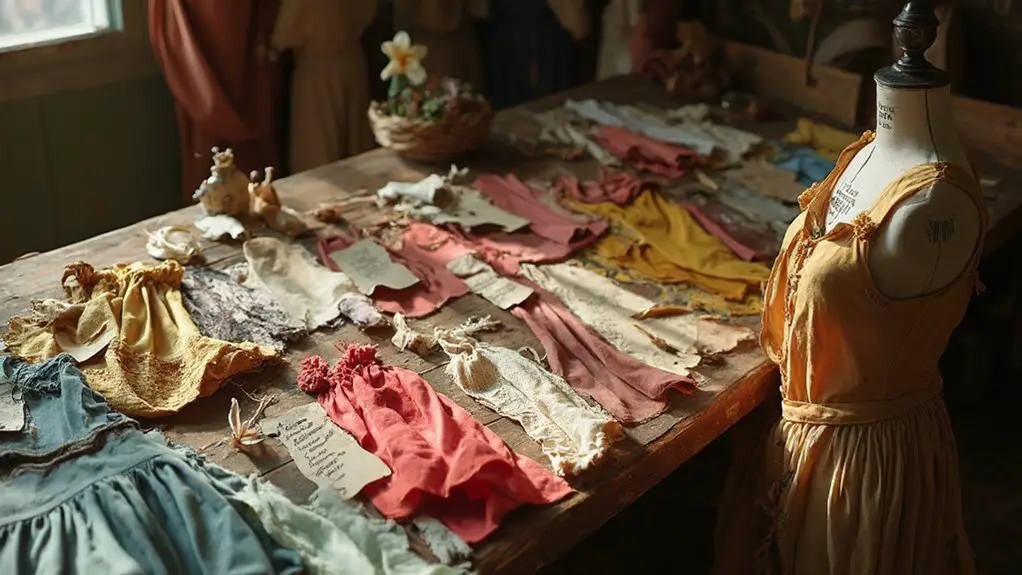
While crafting compelling narratives for vintage clothing listings, understanding your audience is key to capturing their interest. You need to know who you're trying to reach, as it can make or break your storytelling.
To create an engaging narrative that resonates, consider these techniques:
- Know your target market: Identify their interests, needs, and pain points.
- Research trends: Immerse yourself in social media, fashion blogs, and customer feedback to gauge what's in demand.
- Tailor the story: Adjust your narrative to hit those emotional notes that your audience craves.
- Use buyer personas: Develop profiles of potential buyers to guide your storytelling approach.
Celebrating Craftsmanship and Patina
As you explore vintage clothing, you can't help but appreciate the craftsmanship and unique patina that characterize each piece. Those little nicks and scratches on a beloved leather jacket? They tell stories of adventures past—like when your best friend accidentally spilled coffee all over it during a road trip.
You see, patina isn't just a fancy word; it's the natural aging process that creates that cherished, one-of-a-kind look. Whether it's the warm sheen of a well-worn coin purse or the subtle fading of your favorite denim jacket, each mark adds character, making the item feel personal and full of life. Classic apparel often features a distinct quality that enhances both its aesthetic and value over time, reflecting average discount that consumers are willing to pay for timeless pieces.
While some folks might see a scuff as damage, you know it's a badge of honor, a proof of its quality and durability. Full-grain leather often develops the richest patina, absorbing every touch and experience, making it uniquely your own. Items with higher resale value often maintain original price integrity, reflecting their enduring appeal.
Think of it as the clothing equivalent of a well-loved book—with pages creased and dog-eared, it's so much richer for its wear. So next time you hold that vintage treasure, remember: the charm lies not in its perfection but in its beautiful imperfections.
Highlighting Rarity and Exclusivity
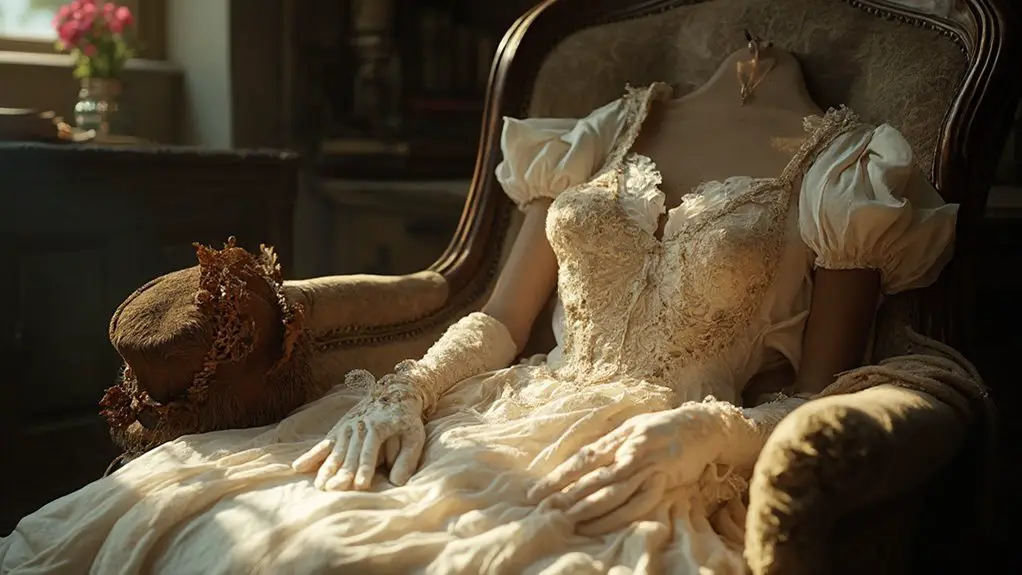
In the world of vintage clothing, rarity and exclusivity play pivotal roles in capturing the hearts of collectors and enthusiasts alike. When you showcase a piece that stands out from the crowd, you're not just selling fabric; you're telling a story that grips your audience's imagination.
To truly highlight that special quality, consider the following:
- Emphasize Unique Features: Mention if the item is one-of-a-kind or has intricate details that can't be found elsewhere.
- Mention Limited Editions: If your piece is from a limited release, call that out. It's a major selling point!
- Share Historical Background: Dig deep into the garment's past, sparking interest with its historical significance or cultural relevance.
- Research Market Trends: Know what rare items are currently in demand, so you can tailor your listings to enthusiastic buyers.
With mysterious embellishments and enchanting histories, rarity enhances the appeal of vintage clothing, making potential buyers feel like they're about to start on an adventure.
Imagine them proudly wearing a piece with a fascinating backstory—it's what makes vintage shopping feel like treasure hunting! So, embrace those unique aspects in your listings.
Ensuring Transparency and Accuracy
Rarity and exclusivity capture excitement in vintage clothing, but presenting these pieces honestly is just as important.
Picture yourself browsing online, trying to find that perfect vintage gem, only to be hit with vague descriptions and inaccurate sizing. To avoid this disappointment, always provide accurate measurements—think chest, waist, inseam, and sleeve length. You might want to grab your trusty tape measure because vintage sizing can be a bit tricky. Don't forget to state sizes clearly and explain any conversions if needed! In addition, referencing the current prices of similar items can help inform potential buyers about their investment, especially considering that price variations are observed across sizes.
Now, let's talk condition—be the honest friend who tells you when those jeans are a bit too snug. Use precise terms like "Excellent" or "Fair," and don't shy away from mentioning those tiny flaws or signs of wear. Many items fall under the category of Preworn condition, which emphasizes the importance of honest assessments.
Remember, detailed photos are your best friend—showcase the garment from all angles and use natural lighting to capture true colors. Including photos of size distribution can also help buyers understand what they are purchasing.
Lastly, research can work wonders. Sharing the history of a piece adds charm, and let's face it, who doesn't love a good story? Transparency and accuracy aren't just good practice; they're the keys to building trust, ensuring that excitement lasts well beyond the sale!
Conclusion
So, maybe you're thinking, "I can't possibly write like that!" But don't stress; storytelling isn't about being perfect; it's about connection. Picture your vintage piece as a character with a story to unfurl. Infuse it with personal touches, like where you found it or the memories it holds. Trust me, it'll resonate with buyers who want more than just fabric—they want a piece of nostalgia. Embrace the process, and watch your listings transform into must-have treasures.
